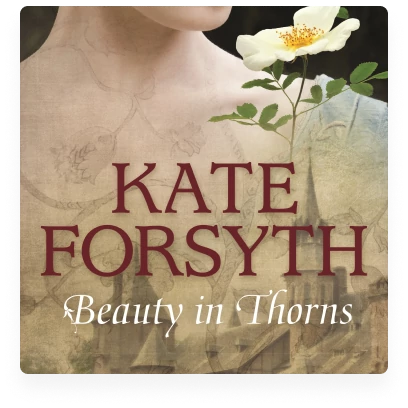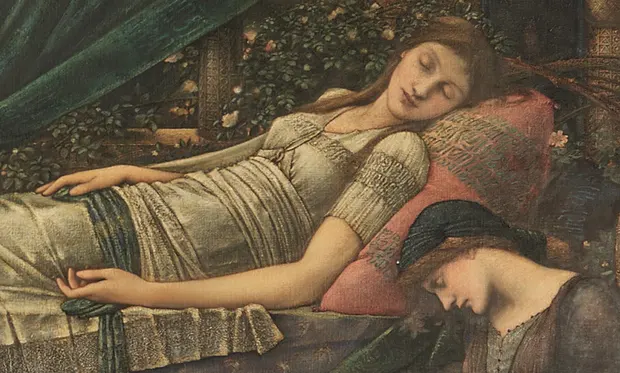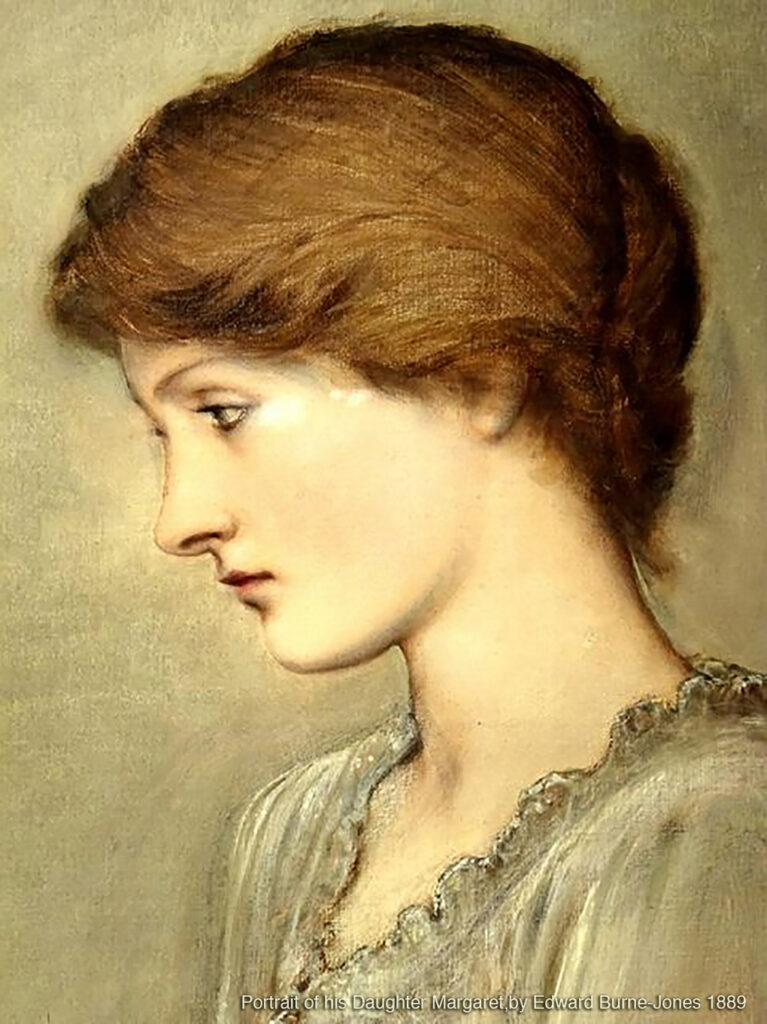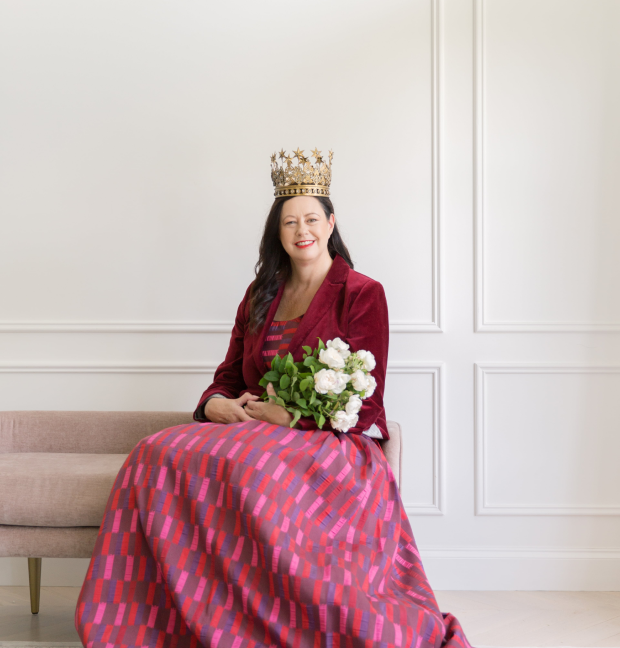
Kate Forsyth – keynote speech at the Historical Novel Society Australasia conference, October 2023
When I was a little girl, the two things I loved most in the world were gardens and stories.
I had lots of the second. My mother and my grandmother made sure of that.
But I didn't have a garden. We lived in my father's vet hospital and all it had was a concrete yard and a hills hoist contained within high stone walls.
But a jacaranda tree grew on the other side of the wall. Every spring it dropped a magic carpet of soft purple flowers over the wall for me. I thought they looked like fairy ballgowns. I used to collect the fallen petals - and leaves and sticks and stones - and I created little enchanted gardens for myself. Whoever planted that tree never knew what joy it brought into my life. Indeed, they might never have seen its beauty for themselves as jacaranda trees take many years to grow.
Many of you will know that a savage attack by a dog when I was a toddler meant that I had a childhood confined by chronic illness. My world was bounded by the metal bars of my hospital bed. But I discovered something that changed my life. I discovered that it did not matter how sick I was, or how sad, or how mad … if I opened the pages of a book I'd be transported to another time and another world and for a while I'd be someone else, living a very different life. Stories taught me how to imagine myself into other people’s skins, how to be someone other than myself.
As a little girl, I had a particular love of those stories of enchantment and peril and transformation that we call fairy tales. And, unsurprisingly for a girl cursed to be sick and kept in stasis, one of my favourites was Sleeping Beauty. It is a story in which a girl is struck down by a terrible spell and must sleep for 100 years. When the curse is broken and the Sleeping Princess awakens, the whole world wakes with her.
As a writer, I am always drawn to stories that carry mystery in their heart. For me, the unanswered question at the heart of Sleeping Beauty is - what would it be like to sleep for 100 years and then wake up?
This question is so central to my fascination with Sleeping Beauty that when I came to engage with it in my novel ‘Beauty in Thorns’, it became my opening line:
‘Imagine falling asleep for 100 years. Would it not be awful?’ Georgie McDonald whispered to her sister.
Carrie gave her a quick crooked smile but the shabby young man who sat at Georgie’s feet laughed. ‘Why? I think it would be marvellous. … just think of it ! What new discoveries would have been made, what new inventions?’
That shabby young man was Ned Jones who would grow up to be the Pre-Raphaelite artist Edward Burne-Jones. He painted many different versions of Sleeping Beauty, including a monumental series called ‘The Legend of Briar Rose’ which caused a public sensation and was sold for 15,000 guineas, the most money a British artist had ever been paid.

My novel ‘Beauty in Thorns’ tells the story behind this painting, told mainly from the point of view of Georgie Macdonald, who grew up to be Edward Burne-Jones’s wife, and their daughter, Margot, who was the model for the sleeping princess in the painting.
The lives of women can be hard to research. Often they are invisible in the historical record. This is true of Margot Burne-Jones. Her artist-father has reams written about him, but his daughter is just the face of his most famous painting.
One thing I found very difficult to discover was the date of Margot's birthday. It took me absolute ages digging through parish records and the like. But on the day I discovered it, I felt the most extraordinary chill all over my body.
You see Margot Burne-Jones was born on the 3rd of June 1866 and I was born on the 3rd of June 1966 - exactly 100 years later. This discovery illuminated so much for me. It made me realise just how much the world had changed in those 100 years - how far we had come, how much we had won.

When Margot was seventeen and began to pretend to be a sleeping princess so her father could paint her, women’s lives were rigidly restrained physically and psychologically. There were no public lavatories for women, so they could never travel far from home. The fashion of the day kept them hobbled and the laws of the day kept them utterly subservient.
Women could not gain a university degree in Great Britain – they were first allowed to attend university in 1868, when Margot was two, but they could not graduate with a degree until 1920 at Oxford University and 1947 at Cambridge University.
Women could not work as doctors or lawyers or engineers. The first woman ever to qualify as a doctor was Dr James Barry, who was born female but dressed as a man from the age of twenty to attend medical school. He was only revealed to be she when they died in 1865, the year before Margot was born.
In that same year, Elizabeth Garrett Anderson became the first woman to openly qualify as a doctor, after exploiting a loophole in the rules. These rules were immediately tightened to stop other women from qualifying. The British Medical Association only accepted female doctors in 1892.
Women could not own property or sign contracts, and if they worked, they could not keep their own wages.
And, of course, women had no right to vote. Margot and her mother Georgie marched in the streets for women’s suffrage. Two years before Georgie died, she saw the law changed so that rich women over the age of 30 could vote. She proudly did so. Margot saw the passing of universal suffrage in 1928, when she was 62 years old.
However, her brother Philip - who was gay – was still facing the threat of criminal prosecution for his sexuality. The year he was born, the law was changed so that gay men were not executed for their so-called crime, but faced ten years’ hard labour instead. One of Philip’s friends, Oscar Wilde, suffered this punishment in 1895. Homosexuality was only decriminalised in the UK in 1967, one hundred and one years after Margot was born.
Here in Australia, we are proud of the fact that we were one of the earliest to grant the right to vote to most Australian men and women. The key word here, of course, is most. Because, as we all should know, Aboriginal and Torres Strait Islander men and women had to fight until 1962 to be granted that right to vote. 1962! Only four years before I was born. And the Aboriginal Land Rights Act which finally recognised the dispossession of our First Nations people was not passed until 1983, when I was 17.
That is the year that Margot would have woken if she had pricked her finger on a spindle and been cursed to sleep for 100 years.
What would she have seen when she woke up?
What marvellous inventions, what wonderful new discoveries?
Cars, trains, planes, robots, computers, mobile phones, antibiotics, artificial hearts, X-rays, the contraceptive pill, public toilets, miniskirts, bikinis, sneakers, daycare centres, abortion clinics, civil rights marches, the Sydney Gay and Lesbian Mardi Gras, the Aboriginal Tent embassy, women in space.
Right now it feels as if we are all stuck in stasis, that it’s impossible to change the world for the better. We fear for the future of this beautiful planet of ours, we fear what kind of world we have made for our children. We face immense challenges – climate change, genocide, massacres, pandemics, prejudice and intolerance, refugees, terrorism, war.
When will we learn from the mistakes of the past? People ask.
To learn from the past we need to know it. And that is why historical fiction is so important. Historical fiction illuminates both the past and the way forward, it shows us how far we have come and it teaches us how change can occur.
We can learn from the past. We can change the world.
Small acts can lead to profound transformations.
In 1866, the year Margot Burne-Jones was born, the first petition for the right for women to vote was presented to Parliament. John Stuart Mills, the man who carried that scroll of 149 signatures into the House of Commons, famously said: "Bad men need nothing more to compass their ends than that good men should look on and do nothing."
In 1930, Gandhi led the Salt March in India, saying: ‘We need to be the change we wish to see in the world.’
In 1955 in Alabama, Rosa Parks refused to stand for a white man on a bus. ‘Stand for something or you will fall for anything,’ she said. ‘Today’s mighty oak is yesterday’s nut that held its ground.’
In 1989, an unknown man stood his ground before a tank in Tiananman Square in China. We shall never hear his words.
In 1995, Dolly Parton founded the Imagination Library which has now given more than 200 million books to children around the world. She says: “When I was growing up in the hills of East Tennessee, I knew my dreams would come true. I know there are children in your community with their own dreams. They dream of becoming a doctor or an inventor or .. maybe there is a little girl whose dream is to be a writer and singer. The seeds of these dreams are often found in books and the seeds you … plant in your community can grow across the world.”
So let us be the change we want to see in the world, let us stand our ground, let us plants seed that might one day grow into mighty trees, let us bear witness, let us imagine a better future and work to make it come true.

